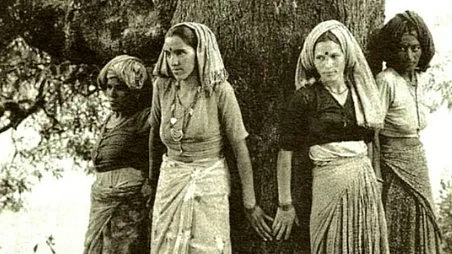1974 was a very turbulent year for India. Repeated crop failures had created near famine-like conditions as the food shortage crisis worsened. In a previous column in this series, the authors highlighted how Indira Gandhi had “nationalised” the food grains trade to fix the shortage. The reuse happened.
By then, students in Gujarat and Bihar had raised the banner of revolt and Jai Prakash Narain had declared Total Revolution. Amidst these tumultuous developments, a revolt by a handful of women in a remote village in Uttarakhand failed to get enough media attention. But that was not for long. In a short span, this brave attempt by women to protect their forests and trees from marauding contractors grabbed global headlines and became famous as the Chipko Movement.
In many ways, the Chipko Movement heralded the era of serious environmental activism in India. In contemporary times, celebrities have latched on to the bandwagon in such a “virtue signalling” manner that environmental activism has become a fad rather than a serious quest for solutions to issues like deforestation, pollution, unbridled construction and “development” in ecologically fragile hill states like Himachal Pradesh and Uttarakhand.
But this band of women had not much idea about even the word “activism”. Nor were they schooled in fancy jargon. They had a simple desire. The trees and forests were not just their home, but also a lifeline. And they were not willing to let contractors wantonly keep felling trees. Unlike today’s environmental activists, they were genuine home-row heroes.
Unchecked plunder of the forests during the 1960s had created a livelihood crisis for people in Uttarakhand and women bore the brunt as firewood, fodder and other bounties of nature became scarce. Deforestation also led to chronic water shortages. A homegrown movement gathered momentum after devastating floods in the Alaknanda River in 1970 washed away scores of villages.
By 1973, the Chipko Movement had started getting attention. In simple terms, the movement meant village women, young girls and boys clinging to and hugging trees for long periods to prevent their felling. Various self-help groups were formed to sustain the movement and protect the trees and forests. While the movement was decentralised to a large extent, it was inspired and led by Sunderlal Bahuguna who travelled across villages in hilly terrain exhorting locals to protect their forests. Bahuguna would go on to become the global face of the Chipko movement.
But it was unknown and obscure women who played a pivotal role in the Chipko Movement. Corrupt officials of the Uttar Pradesh (Uttarakhand was then a part of UP) Forest Department and contractors were not happy at all with the mass resistance displayed by villagers. The Forest Department kept awarding contracts for felling trees and the villagers kept resisting by hugging trees and denying contractors.
One such unsung heroine emerged in March 1974. Men from nearby villages had been “lured” by officials to Chamoli in the name of offering compensation. Stealthily on 25 March night, contractors hired thugs and workers crept towards a cluster of trees near Reni village to cut trees. A young village girl saw the movement and rushed back to the village and informed Gaura Devi who was the head of the village self-help group of women. All the males were in Chamoli.
Undeterred, Gaura Devi led 27 women to the site where the workers were making preparations to fall the trees. Gaura Devi confronted the loggers and led the 27 women in a move to prevent felling. Thugs hired by the contractors abused, threatened and pointed guns at Gaura Devi. She was unflinching. The standoff continued throughout the night and the goons couldn’t budge the band of women led by Gaura Devi.
By the morning, the menfolk and some leaders had arrived back at the site. The contractors, the thugs and the workers were forced to retreat. This created a storm in the capital Lucknow. The licenses given to private contractors were cancelled. So impactful and powerful was the message of the movement led by unknown women like Gaura Devi that the Indira Gandhi government at the centre in 1980 completely banned the felling of trees in the region for a period of 15 years. This policy led to a regeneration of forest cover in Uttarakhand.
Two lessons from that long-gone era still stand out. The first is about Nari Shakti. There is much talk about women's power in contemporary India. However, throughout history, women have always played a key role in social movements. The second is that states like Uttarakhand still face an existential threat because of unbridled “development”.
The devastating floods of 2013 were a reminder of the destruction that would be imminent if saner counsel didn’t prevail. In recent times, thousands of people have been rendered homeless because of deep cracks in places like Joshimath.
Perhaps Uttarakhand awaits another generation of Gaura Devis to lead a fresh movement.
(Yashwant Deshmukh and Sutanu Guru work with the CVoter Foundation. This is an opinion piece and the views expressed are the authors' own. The Quint neither endorses nor is responsible for them.)
